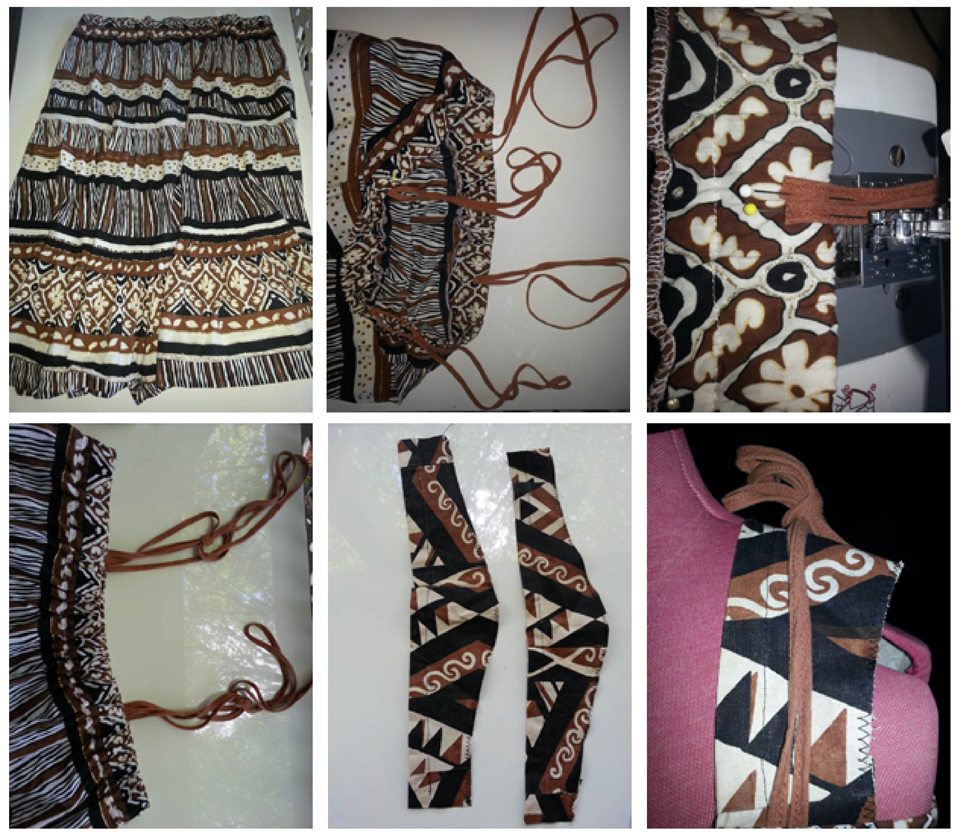This fabric has a tapa-cloth look but it’s just an ordinary cotton skirt turned into a dress by adding shoulder straps.
Tapa cloth is made from bark and one of many naturally-derived textiles that form society’s early story-telling history.
Beverly Gordon says in her book Textiles: the whole story, there are some potent textile metaphors that are now part of our everyday vernacular describing life experiences.
We talk of ‘spinning a yarn’ when we draw out words and put them together to tell a tale, and we ‘put a spin on’ ideas or events, shaping them as we would like them to be.
People who dabble in magic ‘weave’ spells. These days we also follow ‘threads’ in online conversations, as our discussions weave in and out of each other.
We talk about life ‘hanging by a thread’, which reminds us of our fragility and the preciousness of our time on Earth. Fibre terms are used to describe deterioration or coming apart – things are frayed, ripped, tattered or shredded.
Gordon says a new textile, like a new life, is clean and fresh, and unused cloth often functions as a symbol of purity as well as wholeness. In contrast, worn cloth represents the end of wholeness and, like a worn-out life, has little future.
Through this 365-day eco-clothing project, I’m creating a new story about worn cloth by using creativity and imagination to stitch-up a second life for discarded garments.
Today’s offering was a long, full skirt found in an op shop. It makes a cool, loose dress when strappy shoulders are added. For the straps, I used fabric scraps from two other garments. The spagetti straps looked a bit plain so I added another layer of similar fabric for interest and balance. Pin straps in place before sewing, and adjust the position or length according to your preference.

